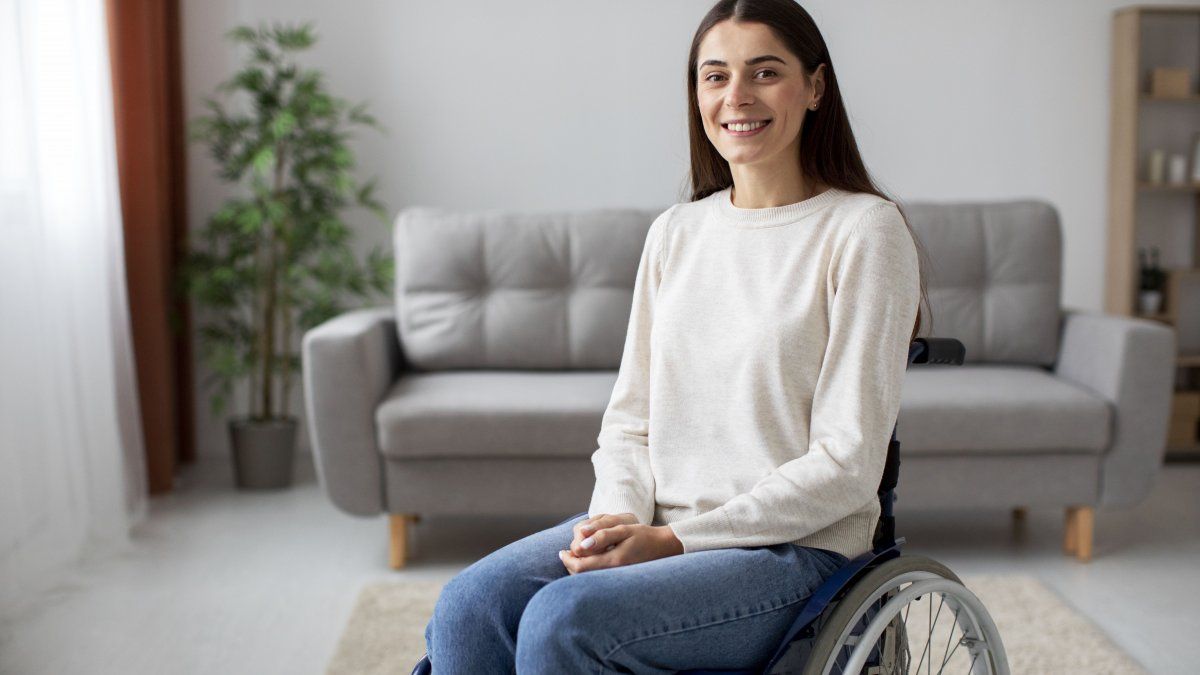Being a woman costs. AND being a woman with a disability costs twice as much. It was in my adolescence when I first encountered a society in which I did not fit into the established ideals. A blow that forced me to go through a conflictive process with myself comparing myself to that “slender”, “perfect” but, above all, “normal” woman. And I found tiny clothing fitting rooms, lack of representation and visibility, lack of accessibility before my first obstetric checkups, among other barriers. Some time later I was looking for my wedding dress and I realized that society found it strange that I was getting married and having a partner. Why strange?
The years have passed and, even with certain advances, it is still very difficult to talk about the impediments that women with disabilities go through. Doubly excluded, due to gender and condition, we tend to remain absent in discourses that revolve around diversity. However, In these times it is essential to question this absence as well as the stereotypes, taboos and prejudices that hinder the path towards true inclusion. In fact, how many participate in advertising? How many mothers with disabilities can we see daily?
On the path towards the deconstruction of a perspective that nullifies women with disabilities, we need to eradicate and eliminate an image that disbelieves in their possibility and capacity to participate in different areas and spaces to fulfill historically rejected rights. An imaginary that perceives women with disabilities from passivity, compassion, incapacity and failure.
It is this same perspective that constructs different types of violence and discrimination, for example, obstetric violence related to the rejection by the medical field and society in general of the decision of a woman with a disability to become a mother. Thus, historically they experience exclusion practices linked to access to sexual and reproductive health and lack of information, which are exacerbated by social conditions or lack of resources.
On the other hand, it is essential to highlight the greater vulnerability that women with disabilities face in the face of physical and gender violence. In this context, the Convention on the Rights of Persons with Disabilities, a regulatory framework, recognizes “that women and girls with disabilities are subject to multiple forms of discrimination and, in this regard, will adopt measures to ensure that they can fully and equally enjoy of conditions of all human rights and fundamental freedoms.”
For this reason and because it is vital to delve into the conceptual bases that generate and build these attitudes, we review 5 stereotypes that permeate the lives of women with disabilities and that we need to banish if we are committed to a more egalitarian society.
1-HE CANNOT EXERCISE HIS SEXUALITY AND/OR MATERNATE
Historically, women with disabilities have been considered not only asexual but also imperfect, lacking sensuality or attractiveness, and unproductive. For this reason, society usually believes that she cannot have sexual relations, a partner, or casual ties since it is difficult for her to attract or for a person to want to be with her. Her body is omitted from taboo topics such as menstruation or contraception and family planning.
On the other hand, there is a generalized prejudice and great taboo when considering your decision about being a mother, or not, (in cases where this is possible) both on the part of society in general and the medical field and even the family. However, recognizing the right to live sexuality and choose about motherhood is fundamental. In any case, it is society that imposes these barriers due to the lack of representation, educational policies and support that promote the participation of women with disabilities.
2-IT IS NOT “BEAUTIFUL”
Today there are still gender stereotypes and strongly established parameters of normality that make it difficult to consider women with disabilities from diversity and not from failure or “being incomplete.” In this context, discourses of all kinds emerge: advertisements offering products to “be better,” as well as images of bodies that conform to established beauty ideals and that represent only a part of the population. Thus, bodies that do not follow certain rules appear to be “wrong” and are therefore victims of naturalized violence.
3-HE CANNOT DECIDE ABOUT HIS LIFE
The assistanceism that permeates the lives of people with disabilities, especially women, greatly damages the level of independence and autonomy in most everyday areas. For example, it is common for people to refer to the mother to consult or ask about different issues instead of addressing the person themselves. Thinking of them as “eternal girls” does nothing other than impede their freedom to decide about their own life and body.
4- SHE IS NOT A CONSUMER
In speeches especially aimed at female audiences, it is common not to find women with disabilities represented. For example, in makeup or personal care advertisements it is still difficult to find them from an active perspective and consumer role. However, many women with disabilities go out, have fun, put on makeup or like to access fashion.
Although with advances, fashion continues to be an exclusive field for women aligned with certain characteristics related to established beauty parameters. Thus, obstacles continue to exist such as inaccessible fitting rooms, lack of support and communication barriers in stores.
5-CAN’T WORK
Labor barriers are one of the main limitations of society for people with disabilities, and especially for women who are usually considered unproductive, weak or passive. Promotion or professional growth and access to education are made impossible, which inevitably has consequences on the development of the person. It is enough to think about how many lawyers, teachers and doctors, journalists with disabilities we see every day to realize the shortcomings that still exist at this point.
If we talk about gender and disability, we are talking about the right for all people, regardless of their characteristics or conditions, to have access to the different areas of society. Even with progress, today the discourses of diversity and female empowerment maintain an outstanding debt with women with disabilities that must be paid when it comes to betting on a more inclusive and egalitarian society.
Graduate in Communication (UBA) and facilitator in disability and diversity
Source: Ambito
David William is a talented author who has made a name for himself in the world of writing. He is a professional author who writes on a wide range of topics, from general interest to opinion news. David is currently working as a writer at 24 hours worlds where he brings his unique perspective and in-depth research to his articles, making them both informative and engaging.




